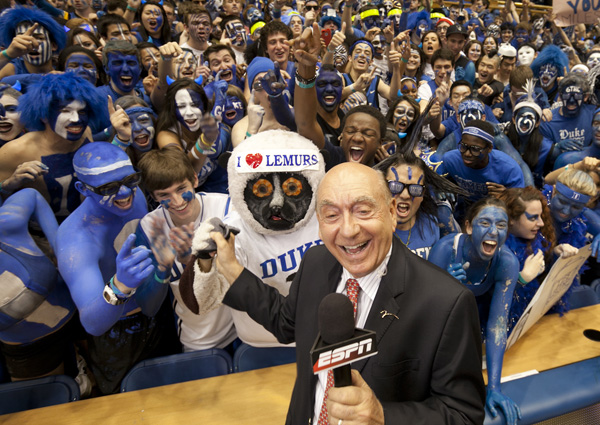
Source: Marcellus Effect
By Becca Bayham
You may wonder: what the frack is fracking?
Hydraulic fracturing, or fracking, is the process by which water, sand, and chemical additives are pumped into a well to fracture deep underground formations and allow natural gas to flow to the surface. Fracking has reduced our dependence on foreign oil, decreased carbon emissions and made significant contributions to our nation’s economy. However, the technology can have significant social and environmental impacts, according to Duke professor Avner Vengosh.
Vengosh joined Brooks Rainey Pearson from the Nicholas Institute, David Burnett from Texas A&M’s Global Petroleum Research Institute and Keith McLeroy from Texas’ Engineering Extension Service for an in-depth discussion about fracking, April 9. The event was sponsored by Environmental Alliance and the Drilling, Environment, and Economics Network, two on-campus student groups.
Vengosh described how shale gas drilling and fracking can disturb residents of formerly quiet towns with nearly-constant noise, odor and truck traffic.
“This is changing the dynamics of small towns in Pennsylvania [and other states] pretty significantly,” he said.
Vengosh said that fracking can also impact air and water quality — and thus human health. Earlier this year, he published the first peer-reviewed paper to examine well-water contamination from shale-gas drilling and hydrofracking. He and his colleagues found that drinking water wells within 1 km of a drilling operation were more likely to have high concentrations of methane, the primary component of natural gas.
Fracking is also very water-intensive, requiring millions of gallons of water at drilling each site. In areas experiencing drought conditions, this presents a serious problem, Vengosh said.
Many companies recycle the water they produce. However, the water that flows out differs significantly from water that went in, often containing high levels of salts, heavy metals and naturally-occurring radionuclides that can be difficult to remove. According to Vengosh, some companies bypass that difficulty by discharging their wastewater to nearby rivers or streams.
“It’s not nice, but it’s done,” he said.
According to Pearson, fracking exists within a unique regulatory environment. The technology is exempt from several national environmental policies that regulate hazardous waste disposal and environmental cleanup, among other things. Environmentalists often cite the so-called “Halliburton loophole,” which exempts fracking from the Safe Drinking Water Act.
Pearson insists that “these exclusions occurred over time — there’s no one bad guy.”
Many states include fracking under the umbrella of their existing oil and gas regulations, but those regulations aren’t necessarily sufficient, Pearson said.
“States are retroactively seeing the unique regulatory needs of shale gas production, such as the need for baseline water quality data.”
Baseline data — such as air and water quality information — is collected before drilling begins and allows researchers to assess the direct environmental impacts of fracking.
“Without baseline data, it’s very hard for regulatory agencies to say ‘the industry caused this contamination,'” Pearson said.
Burnett discussed efforts to “reach across the aisle between the environmentalists and the oilmen” to develop environmentally-friendly drill programs. The first step is measurement, he said.
“You’ve got to find out what you’re doing wrong, then you’ve got to fix it.”
The panel concluded by emphasizing that, for all its problems, natural gas will help us reduce our reliance on oil and coal and transition to an an era of cleaner energy.
“The effects are there, but you have to see the environmental impacts of the alternatives, which perhaps are worse,” Vengosh said.



















